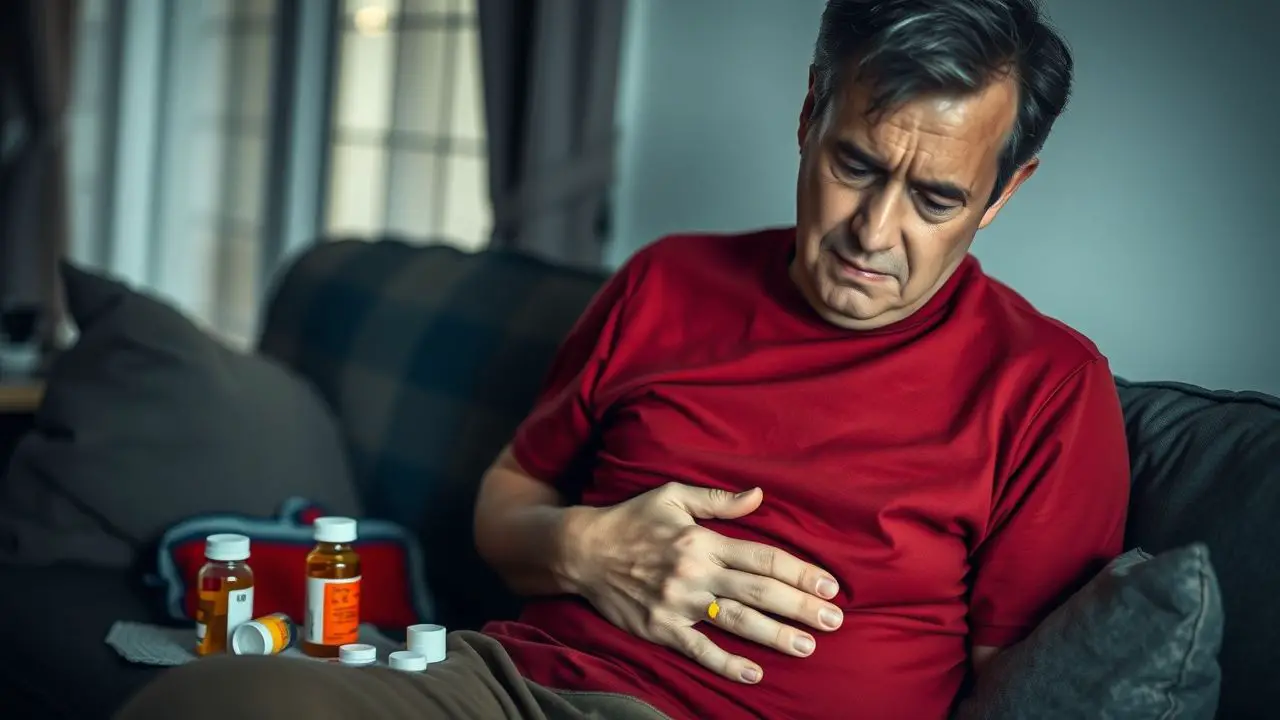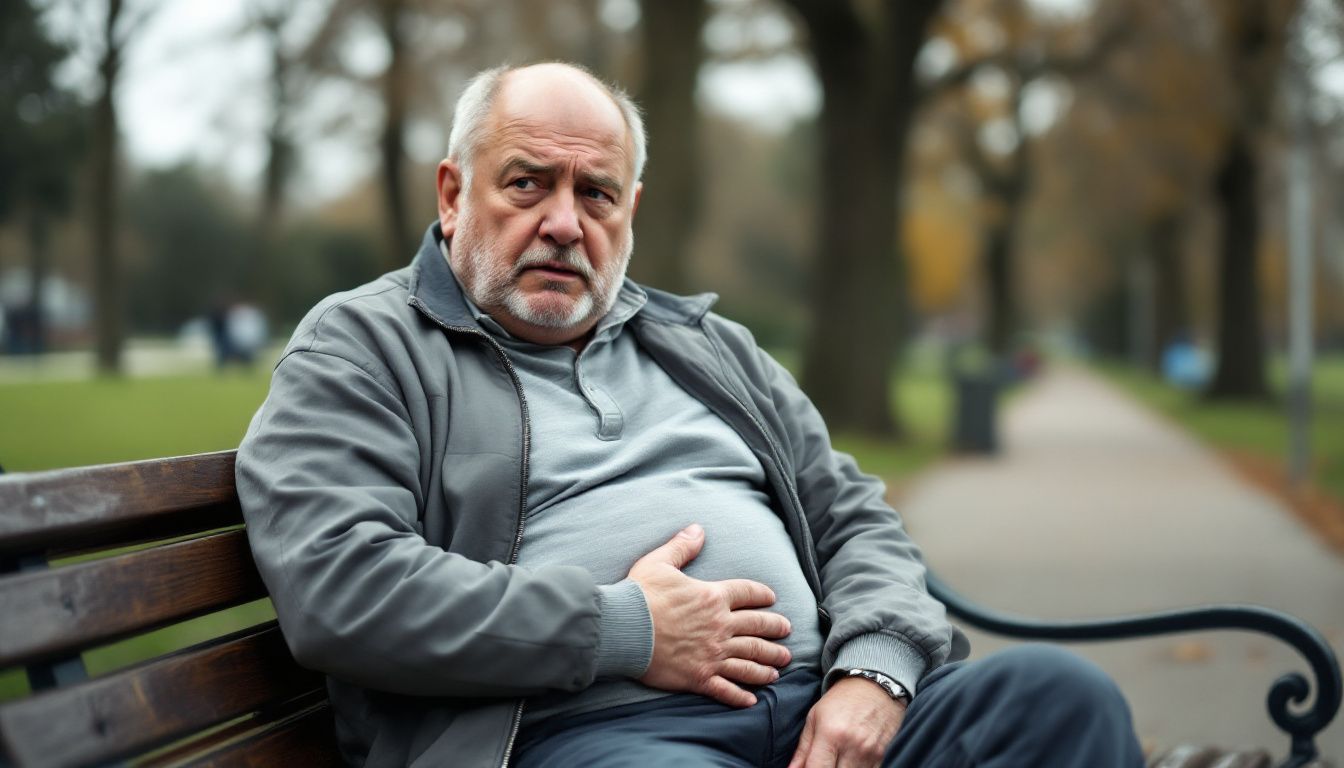Do you often feel pain or discomfort in your lower abdomen or pelvis? Prostatitis, a condition that inflames the prostate gland, could be the culprit. This guide breaks down its causes, symptoms, and treatments to help you find relief.
Keep reading to learn whatâs going on and how to take action.
Key Takeaways
- Prostatitis inflames the prostate gland, causing pain, trouble urinating, or discomfort during ejaculation. It can affect men of any age.
- There are four types: acute bacterial prostatitis, chronic bacterial prostatitis, CP/CPPS (not caused by bacteria), and asymptomatic prostatitis.
- Causes include bacterial infections (E. coli, Klebsiella), pelvic muscle issues, autoimmune disorders, or stress-related nerve damage.
- Treatments may involve antibiotics for infections, alpha-blockers for urinary symptoms, and physical therapy for pelvic pain relief.
- Common symptoms include pelvic pain, frequent painful urination (nocturia), and discomfort during ejaculationâseek medical advice early to prevent complications like abscesses or sepsis.

What is Prostatitis?

Prostatitis causes swelling and irritation in the prostate gland. This small, walnut-shaped gland sits below the bladder and surrounds the urethra. It plays a key role in male fertility by producing fluid that nourishes sperm.
The condition is not cancerous but can cause painful urination, pelvic pain, or discomfort in the genitals. Men of all ages can experience prostatitis symptoms. Some may also face trouble urinating or feel an urgent need to go at night.
Sometimes, it develops due to infections; other times, no clear cause exists.
Prostatitis affects men differentlyâitâs not one-size-fits-all.
Types of Prostatitis
Prostatitis comes in different types, each with its own set of challenges. Knowing these types helps you understand the root cause and find the right treatment.
Acute Bacterial Prostatitis
Acute bacterial prostatitis strikes fast and hits hard. Symptoms come suddenly, often with fever, chills, and severe pelvic pain. Urination may burn like fire or feel impossible due to blockage.
Pain during ejaculation can add to the misery.
This type of inflammation of the prostate demands urgent care. Doctors usually prescribe antibiotics for 2â4 weeks to fight the bacterial infection. Without prompt treatment, it could lead to complications like a prostatic abscess or sepsis, which is life-threatening.
Chronic Bacterial Prostatitis
Chronic bacterial prostatitis creeps in gradually. It causes repeated infections, often sticking around despite treatment. Symptoms linger but feel milder than acute cases. Common signs include a constant dull ache in the pelvic area and trouble urinating.
Doctors usually recommend antibiotics for 4â12 weeks to kill the infection. If it resists treatment, low-dose antibiotics may help prevent flare-ups. In rare cases, surgery might be necessary to remove infected tissue or drain abscesses.
Persistent problems need patient solutions.
Chronic Prostatitis/Chronic Pelvic Pain Syndrome (CP/CPPS)
CP/CPPS causes long-term pain in the pelvis, lower back, or genitals. It isnât caused by bacteria like other prostatitis types. Men often deal with discomfort while peeing or during sex.
Symptoms can last for weeks, months, or even years without improving.
Doctors arenât sure what exactly triggers CP/CPPS. Stress and nerve damage might play a role. This condition doesnât have a cure yet. Still, treatments like physical therapy, medications such as alpha-blockers, and stress management help ease symptoms over time.
Asymptomatic Prostatitis
Asymptomatic prostatitis shows no signs or symptoms. It is often found during tests for other issues, like a urinary tract infection or prostate cancer screening. Doctors may discover inflammation in the prostate gland without any pain or discomfort reported by the patient.
This type doesnât usually require treatment unless linked to other problems. A doctor might check prostate fluid, run a digital rectal exam, or do a urine culture to confirm it. Understanding this condition helps guide care under specific circumstances.
Moving forward, knowing what causes prostatitis can clarify how it develops.
Causes of Prostatitis
Prostatitis can start from infections or other health problems in the male body. Sometimes, itâs linked to issues beyond bacteria, affecting muscles or even the immune system.
Bacterial Infections
Bacterial infections play a big role in prostatitis, especially acute and chronic types. Acute bacterial prostatitis often starts when bacteria from other infections, like a urinary tract infection (UTI), travel to the prostate gland.
Common strains include *Escherichia coli* and *Klebsiella*. This condition can cause severe symptoms quickly.
Untreated cases of acute prostatitis may lead to chronic bacterial prostatitis. In this case, the infection lingers or keeps coming back over time. Men with chronic forms might experience milder but long-lasting discomfort, including pelvic pain or trouble urinating.
Pelvic Muscle Issues
Pelvic muscle problems can tighten the area around the prostate. This may cause pain and trouble urinating. Weak or tense pelvic floor muscles might push on nerves, leading to chronic pelvic pain syndrome (CP/CPPS).
Stress can worsen these issues, making symptoms more severe.
Kegel exercises could help improve control of these muscles. Physical therapy often focuses on stretching and releasing tension in the lower back or pelvis. Poor posture or past injuries might contribute to this problem as well.
Autoimmune Disorders
Sometimes, the body attacks itself by mistake. This happens in autoimmune disorders. In prostatitis, this can cause the prostate gland to swell or hurt without an infection being present.
Hormonal changes might play a role too, sparking an immune system reaction. Psychological stress can also make symptoms worse.
These issues confuse the body’s defense system and worsen inflammation of the prostate. Men with chronic pelvic pain syndrome (CP/CPPS) often experience this problem. Understanding these triggers helps doctors find better treatments for relief.
Next up: Symptoms of Prostatitis…
Symptoms of Prostatitis
Prostatitis can sneak up on you, making daily life uncomfortable. Its signs often point to bigger issues with the prostate or urinary system.
Pain in the pelvic region
Pain in the pelvic area often feels sharp or dull. It can hit the lower back, groin, abdomen, or perineum. Some men feel discomfort in the penis or testicles too. This pain might come and go or stay constant; both can disrupt daily life.
Inflammation of the prostate is a common cause of this ache. Bacterial infections may spread to nearby muscles and tissues, making things worse. Pelvic floor muscle tension also adds to the discomfort for some men with chronic prostatitis.
Frequent and painful urination
Frequent and painful urination often signals prostatitis. A burning sensation, called dysuria, can make each trip to the restroom miserable. You may also feel an urgent need to urinate, even at night (nocturia), disrupting sleep.
Difficulty starting or slowing urine flow is common too. These symptoms stem from inflammation in the prostate pressing against the bladder neck.
An inflamed prostate may irritate nearby nerves, adding discomfort while passing urine. Untreated infections can worsen these issues over time. Prostatitis linked to bacterial infections may cause dribbling or blood in your urine as well.
Donât ignore these signs; consult a doctor quickly for relief and proper care of urinary symptoms.
Discomfort during ejaculation
Pain during ejaculation can signal prostatitis. Inflammation of the prostate gland often causes this discomfort. This pain may range from mild to severe, making intimacy stressful.
It can also feel like a burning or sharp sensation in the urethra or pelvic region.
Bacterial infections are common culprits. These include urinary tract infections (UTIs) and bladder issues. Chronic prostatitis or chronic pelvic pain syndrome (CP/CPPS) may also lead to such symptoms without an infection present.
Blood in semen sometimes accompanies this condition, further highlighting possible inflammation or damage within the male reproductive system.
Understanding the Link Between Prostatitis and Frequent Urination at Night
Prostate inflammation can irritate the bladder. This makes you feel like urinating often, especially at nightâa condition called nocturia. Swelling in the prostate gland may press against the bladder or nearby nerves.
This pressure triggers frequent nighttime trips to the bathroom.
Inflammation from chronic prostatitis can lead to an overactive bladder. The irritated bladder muscles may spasm, reducing control and increasing urgency. Men with this issue often describe waking multiple times during sleep needing relief.
Treating swelling and irritation might reduce these disruptions and improve rest quality over time.
Treatments for Prostatitis
Managing prostatitis depends on the root cause. Treatment focuses on easing pain, improving urinary flow, and reducing inflammation.
Antibiotics for bacterial infections
Antibiotics can fight bacterial prostatitis. Doctors often prescribe them for 2â4 weeks to treat acute bacterial prostatitis. For chronic bacterial prostatitis, the treatment may last 4â12 weeks.
Timing matters because untreated infections can worsen or spread.
Common antibiotics include ciprofloxacin and doxycycline. These target urinary tract infections (UTIs) and prostate inflammation caused by bacteria. A urine sample helps confirm the infection type before starting treatment.
If symptoms like painful urination linger, your doctor might adjust the medication or dosage.
Next is how alpha-blockers ease urinary symptoms linked to prostatitis.
Alpha-blockers for urinary symptoms
Alpha-blockers relax the muscles in the bladder and prostate. This makes urination smoother, especially for men with chronic prostatitis or an enlarged prostate. They help ease problems like a weak urine stream or urinary urgency.
Doctors often prescribe alpha-blockers to treat painful urinary symptoms caused by inflammation of the prostate gland. These medications target stiff muscles that block urine flow, making life easier without invasive steps, like using a urinary catheter.
Physical therapy for pelvic pain
Physical therapy can ease pelvic pain by strengthening the pelvic floor muscles. Therapists use exercises like Kegels to relax tight muscles or improve weak ones. These simple moves help reduce pressure on the prostate gland and nearby areas.
Prostate massage, a part of some therapies, may also boost blood flow and relieve inflammation of the prostate. Techniques include stretches or biofeedback tools to release tension in your belly, lower back, or thighs.
Many men find these methods effective for chronic prostatitis or chronic pelvic pain syndrome (CPPS).
Conclusion
Prostatitis can be tough, but thereâs hope. Awareness of its causes and symptoms helps in finding the right treatment. From pain relief to antibiotics, options exist for every need.
Talk to your doctor about what works best for you. Take charge of your healthâyour prostate will thank you!
FAQs
1. What causes prostatitis?
Prostatitis can be caused by a bacterial infection, urinary tract infection (UTI), or nerve damage. Sometimes, it happens without a clear reason, like in chronic pelvic pain syndrome.
2. What are the symptoms of prostatitis?
Common symptoms include pelvic pain, lower back pain, urinary symptoms like frequent urination or burning during urination, and sometimes blood in urine. In severe cases, nausea or fever may occur.
3. How is prostatitis diagnosed?
Doctors may use a physical exam like a digital rectal exam (DRE), prostate fluid tests, urodynamic tests, transrectal ultrasound, or even a prostate biopsy to diagnose the condition.
4. Can prostatitis lead to other problems?
Yes. It may cause sexual dysfunction such as erectile issues and affect the male reproductive system over time if untreated. Severe cases might lead to complications like prostatic abscesses.
5. How is prostatitis treated?
Treatment depends on the type but often includes antibiotics for bacterial infections and pain management strategies for nonbacterial types. Lifestyle changes can also help reduce inflammation of the prostate.
6. Is there any link between prostatitis and prostate cancer?
No direct link exists between them; however, both involve the prostate gland’s health and should not be ignored for early detection of serious conditions through regular checkups with tools like transrectal ultrasounds or semen analysis when needed.



